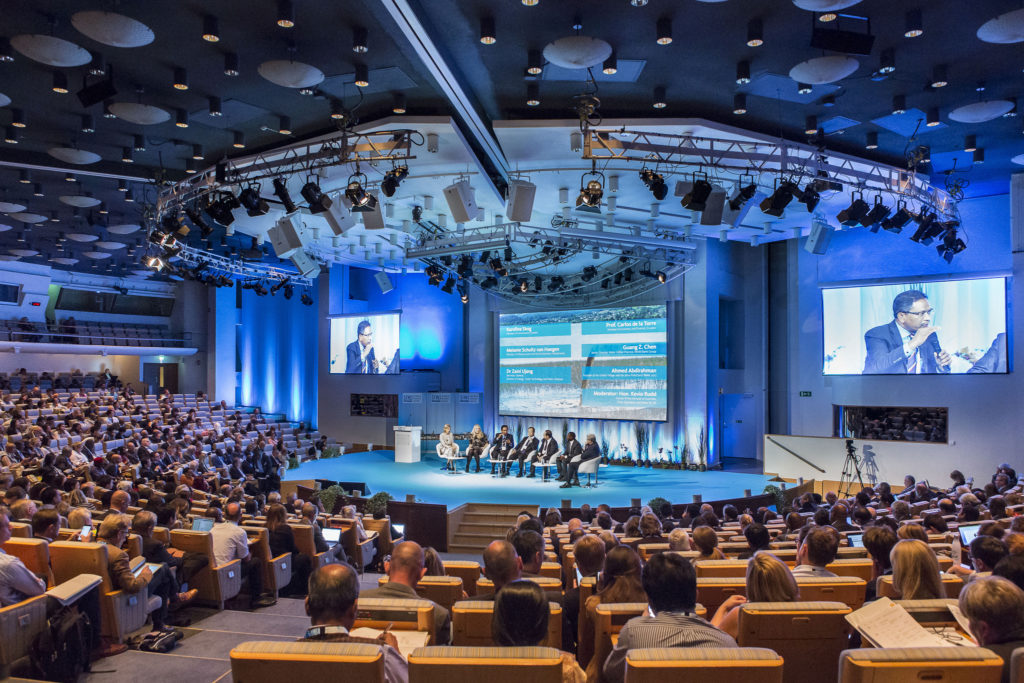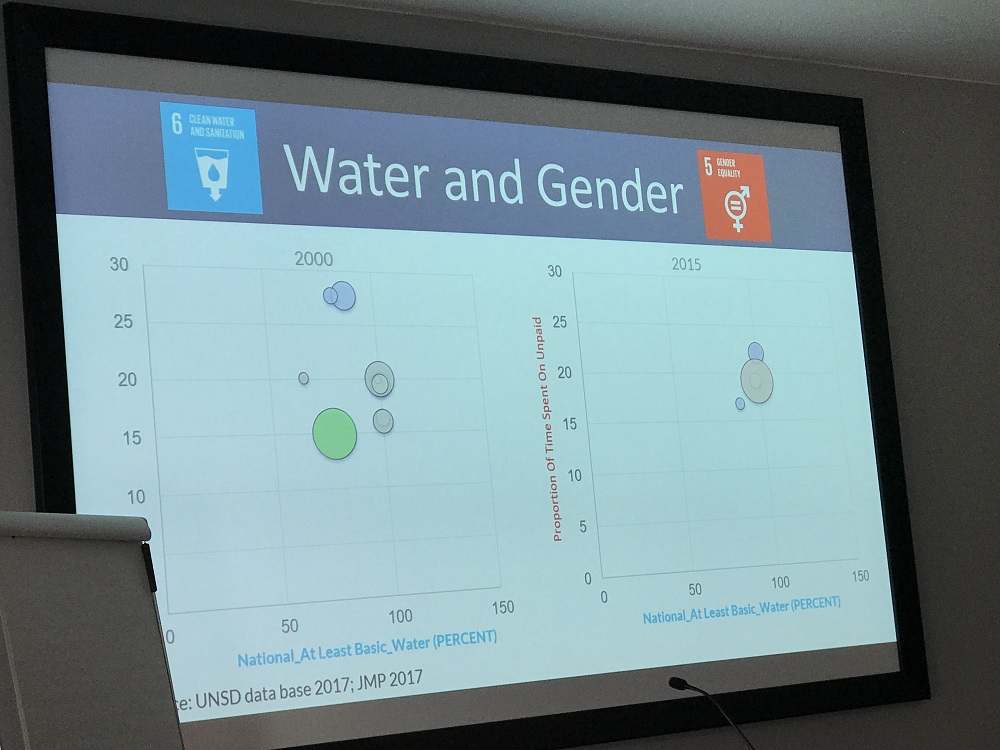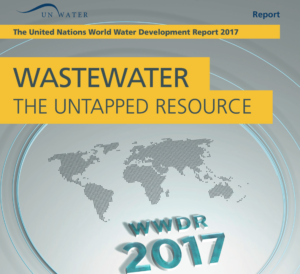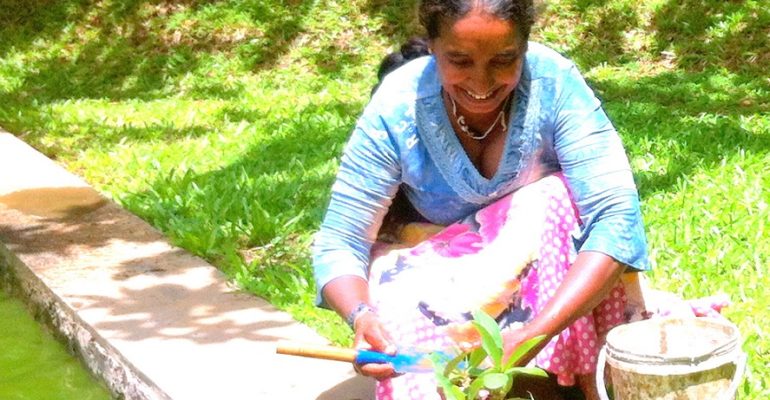World leaders, water experts, development professionals, policy-makers, and one astronaut, gathered in Stockholm for a week-long meeting focused on finding ways to better use, and reuse, the world’s increasingly scarce fresh water. Stockholm International Water Institute Executive Director, Torgny Holmgren says: “World Water Week is a key meeting place for the water and development community; it is here that we come together and make sure that the very best ideas are brought forward”.

Image: Opening Plenary courtesy of Stockholm International Water Institute
On Sunday 27 August, SI President Mariet Verhoef-Cohen presented during the seminar Understanding the gender dimension of water and waste, in which she connected SDGs 5 and 6.3. SI President Mariet underscored that we need to know more about the connections between gender, waste, and water. In her presentation, she provided solutions to ensure women’s expertise and skills in water in general, and waste water specifically, are taken seriously to improve our water and waste management systems.
Why is it important to link SDGs 5 and 6?
SI President Mariet outlined how women play important roles in the preservation of water sources, impacting water scarcity. In many countries women are responsible for fetching clean drinking water for the family, getting water to grow vegetables, caring for family members who are ill because of having to drink dirty water, taking care of waste or waste water. Women are key stakeholders in water policies and programmes. However, they are not always recognized as such. Furthermore, men and women express different priorities and needs.
SI President Mariet stressed that without a safe, uninterrupted, affordable provision of water and gender-responsive sanitation, women’s and girls’ health is at risk – the quality of the water resources is vital. Not only for controlling water-borne diseases, but also because many women are devoting many hours taking care of patients suffering from such diseases – more time than it takes to fetch the water! This is time, which could otherwise be spent on economic endeavours, education, or other productive activities.

Why are there barriers when it comes to fully involving women in water management?
Water management, typically, is regarded as a technology-driven industry, and for generations, SI President Mariet continued, technology was perceived as “not a woman’s business”! Despite their pivotal role in this vital, life sustaining, primary industry, women face a glass ceiling when it comes to active involvement in water management and access to vocational training. SI President Mariet illustrated that it is often the case that women are ignored as soon as “modern” facilities or “advanced” management ideas are proposed.
Women hold only 17% of paid jobs in the water sector. SI President Mariet explained the reasons why women fall behind in this sector, and how they are linked to values and beliefs about the position and role of women. For example, a woman may be perceived as unsuitable for field work, due to an unsafe working environment; social and cultural barriers may also prevent women from having careers, or becoming influential in the water sector.
Is the situation different, specifically from a waste water perspective?
 According to the 2017 World Water Development Report “Waste water the untapped resource” it is estimated that well over 80 per cent of all waste water produced worldwide is released into the environment without treatment. The consequences are alarming. SI President Mariet gave an example, stating that over 800,000 deaths worldwide in 2012 were caused by contaminated drinking water, inadequate handwashing facilities, or inappropriate sanitation services.
According to the 2017 World Water Development Report “Waste water the untapped resource” it is estimated that well over 80 per cent of all waste water produced worldwide is released into the environment without treatment. The consequences are alarming. SI President Mariet gave an example, stating that over 800,000 deaths worldwide in 2012 were caused by contaminated drinking water, inadequate handwashing facilities, or inappropriate sanitation services.
SI President Mariet explained how women are particularly exposed to adverse health effects, due to living on or near the land where waste water is being used. Currently around 20% of the world’s food supply is grown by using untreated waste water. Moreover, this trend is rising due to global water scarcity. This is a serious problem and it must be addressed.
What can be done to improve the situation?
SI President Mariet noted that women’s professional and traditional roles represent a significant social capital that can and should be used: for effecting the much-needed change in waste water governance; for social and economic development and environmental integrity; to build bridges between stakeholders; and to bring about cross-sectoral, transboundary exchanges and cooperation. Women are experts, leaders and agents of change and perform an important role in achieving equitable access to water for all and all uses, including sanitary.
Therefore, it is both effective and sensible to ensure that women participate in all levels of decision making. SI President Mariet advised, that it is helpful to set quotas, having at least 40% women in water governing bodies, where their voices must not only be heard, but acted upon. She called for women to stand up, raise their voices, demand attention and be counted.
On the implementation of SDG 5, gender equality and SDG 6, the dedicated water goal, SI President Mariet reiterated that they must be combined in national action plans. This will not happen automatically; policymakers and budget holders need to be influenced. In many countries women and water issues are considered a priority; in practice, however, there is little “horizontal” coordination between the two.
SI President Mariet highlighted the importance of collecting good, relevant data, as well as the importance of looking at water access and uses, through the lense of both women and men, in order to realistically monitor the implementation of the SDGs. The impacts are different for both sexes, and this is true for water needs and uses alike. This must happen at all levels, including the highest global reporting level, to prevent treating data generally, and risk losing valuable insights from disaggregated data, for policy purposes.
Visit World Water Week for further information, videos and news.

